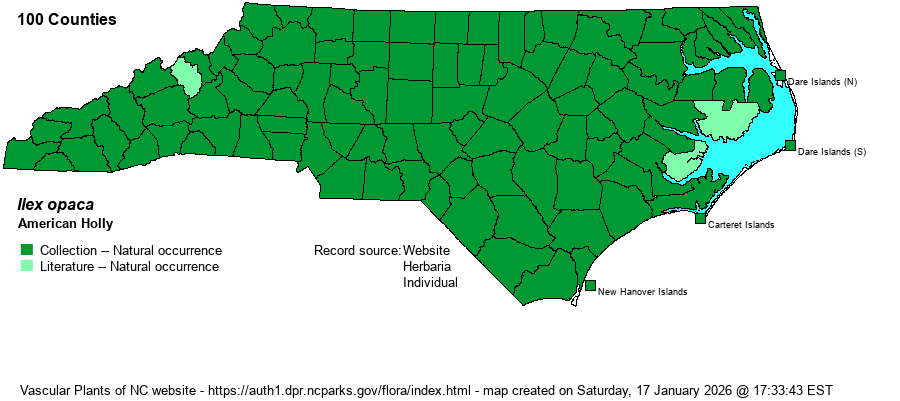| Author | Aiton | |
| Distribution | Throughout the state, no doubt present in all 100 counties.
This is a species that ranges across most of the eastern U.S. but is infrequent north of NJ, VA, and MO. It reaches MA, NY, and southern MI and south to the Gulf Coast.
| |
| Abundance | Common to abundant across essentially all of the state, less numerous at higher elevations. | |
| Habitat | It occurs in great variety of mostly mesic forests, but also is widespread in bottomland forests. It does occur in drier forests, but it is not typically numerous in sandy or in overly rocky soils. It does not normally occur in overly wet ground, but it can occur in drier areas within swamps. Observers are usually able to see this species every day afield in most every county, assuming a visit to the interior of a mesic or bottomland forest. |
| Phenology | Blooms from April to June, and fruits from September to October, with the “berries” persisting through much of the winter. | |
| Identification | This is the only holly that reaches a full-sized tree, typically being a medium-sized (but understory) tree, reaching 60 to rarely 80 feet tall. The species is so familiar to even the layman that there is no confusion with any other native tree, only with non-native species such as English Holly (I. aquifolium). It has alternate, evergreen leaves that are thick, dark green and elliptic, with a few sharp-spined teeth. The female trees – all hollies are dioecious – are heavily adorned with red “berries” in late fall and winter and are an essential food item for songbirds in the winter, especially for American Robins and Cedar Waxwings. | |
| Taxonomic Comments | None
| |
| Other Common Name(s) | Christmas Holly | |
| State Rank | S5 | |
| Global Rank | G5 | |
| State Status | | |
| US Status | | |
| USACE-agcp | FAC link |
| USACE-emp | FACU link |

